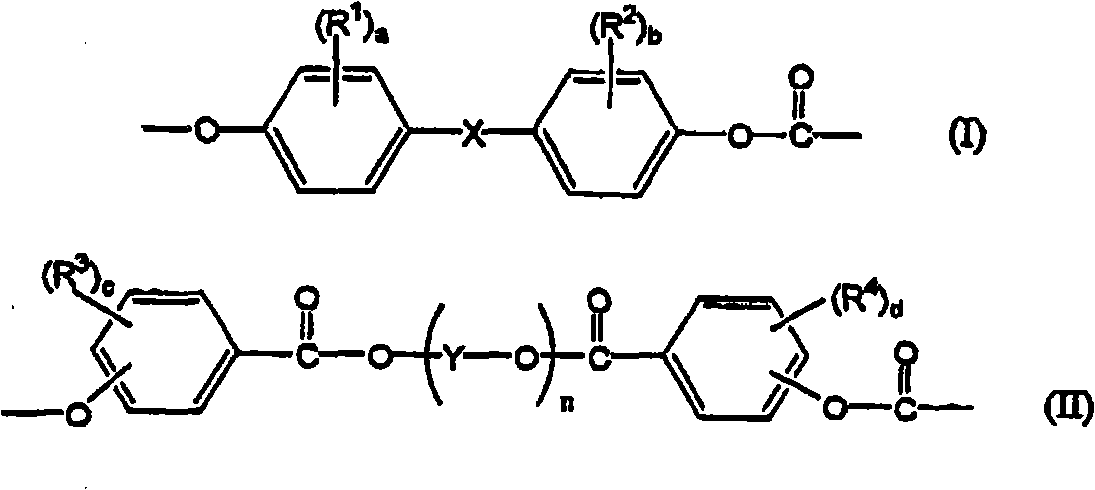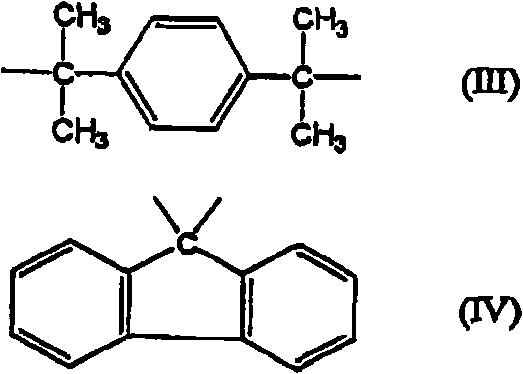Flame retardant polycarbonate resin composition and light reflection member
A technology of polycarbonate resin and composition, which is applied in the field of light reflection plate and its peripheral parts, can solve the problem of deterioration of mechanical properties, decline, and inability to fully satisfy light reflectivity, light-shielding heat release, and dimensional stability of mechanical properties and other issues to achieve the effect of ensuring flame retardancy
- Summary
- Abstract
- Description
- Claims
- Application Information
AI Technical Summary
Problems solved by technology
Method used
Image
Examples
Embodiment
[0158] Next, the present invention will be described in more detail through examples of the present invention, but the present invention is not limited to these examples.
[0159] The performance evaluation in each Example and a comparative example was performed by the following measurement method.
[0160] (1) Mechanical properties
[0161] Flexural modulus of elasticity (rigidity): based on ASTM D790 (measurement condition 23° C.).
[0162] Izod impact strength (impact resistance): based on ASTM D790 (measurement condition 23° C.).
[0163] (2) Light reflectivity Y
[0164] Each of the pellets obtained in Examples and Comparative Examples was dried with hot air at 120° C. for 5 hours, and then molded at a molding temperature of 300° C. and 80° C. A flat plate for reflectance measurement of 140 mm x 140 mm x 3.2 mm was produced at the mold temperature of .
[0165] The light reflectance was evaluated by the Y value with an LCM spectrophotometer MS2020 plus (manufactured b...
manufacture example 1
[0177] [Synthesis of polytetramethylene glycol-bis(4-hydroxybenzoate): average molecular weight of PTMG chain=2000]
[0178] Under nitrogen gas, 100 parts by mass of polytetramethylene glycol (PTMG, Mn=2000) and 16.7 parts by mass of methylparaben were heated at 210°C in the presence of 0.05 parts by mass of dibutyltin oxide, and methanol was distilled off. .
[0179] The reaction system was decompressed, and excess methyl p-hydroxybenzoate was distilled off. After dissolving the reaction product in methylene chloride, an 8% by mass aqueous sodium bicarbonate solution was added to the methylene chloride solution, and after vigorously mixing for 20 minutes, the methylene chloride phase was collected by centrifugation. The dichloromethane phase was concentrated under reduced pressure to yield polytetramethylene glycol-bis(4-hydroxybenzoate). As a result of quantification of p-hydroxybenzoic acid and methyl p-hydroxybenzoate by high performance liquid chromatography (HPLC), p-h...
manufacture example 2
[0182] [Synthesis of polytetramethylene glycol-bis(4-hydroxybenzoate): average molecular weight of PTMG chain=1000]
[0183] Except 100 mass parts of polytetramethylene glycol (PTMG, Mn=1000) and 33.4 mass parts of methylparabens, it carried out similarly to manufacture example 1.
[0184] Paraben is less than 10 mass ppm, and methyl paraben is 0.3 mass%.
PUM
| Property | Measurement | Unit |
|---|---|---|
| particle size | aaaaa | aaaaa |
| particle size | aaaaa | aaaaa |
Abstract
Description
Claims
Application Information
 Login to View More
Login to View More - R&D
- Intellectual Property
- Life Sciences
- Materials
- Tech Scout
- Unparalleled Data Quality
- Higher Quality Content
- 60% Fewer Hallucinations
Browse by: Latest US Patents, China's latest patents, Technical Efficacy Thesaurus, Application Domain, Technology Topic, Popular Technical Reports.
© 2025 PatSnap. All rights reserved.Legal|Privacy policy|Modern Slavery Act Transparency Statement|Sitemap|About US| Contact US: help@patsnap.com



